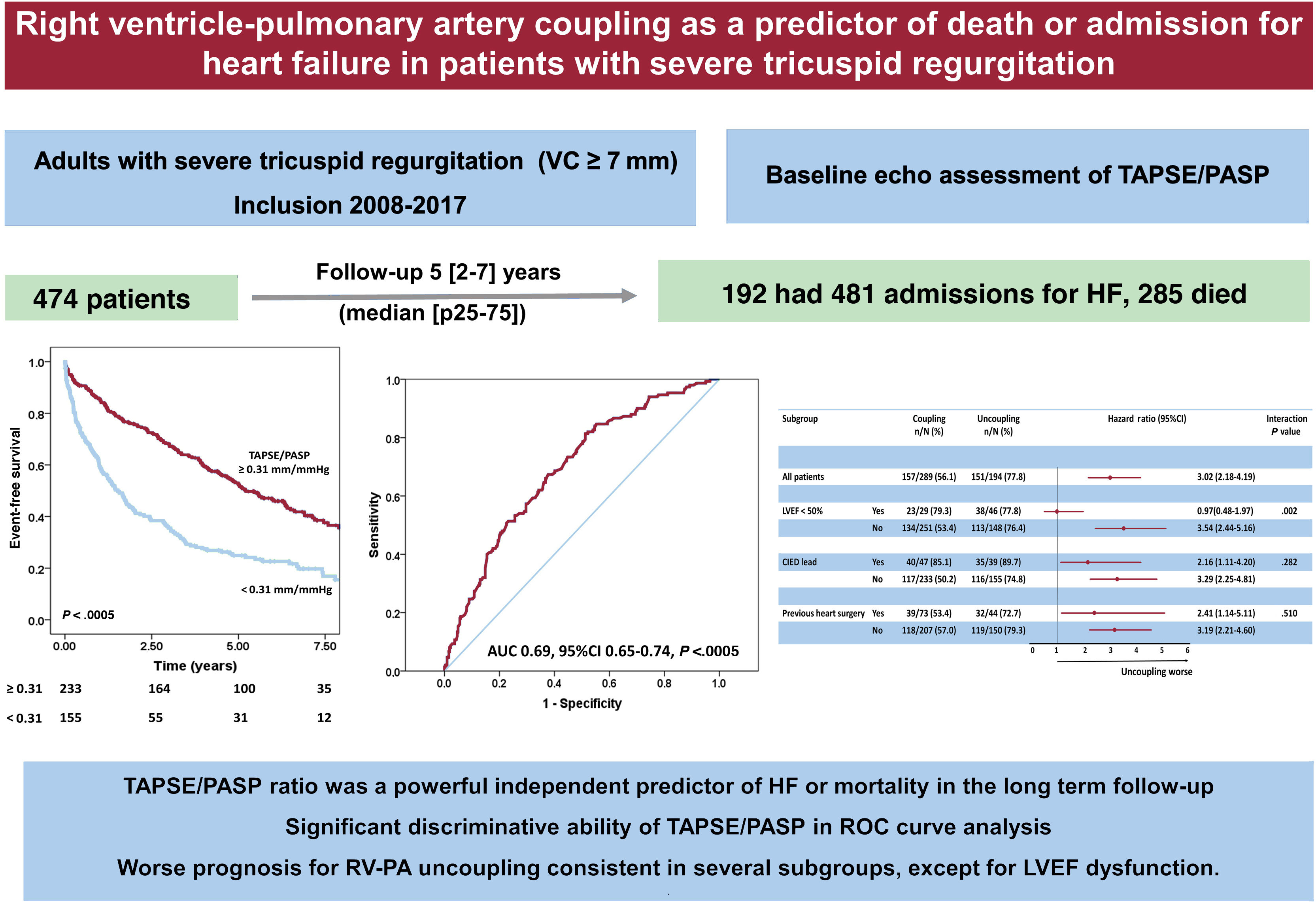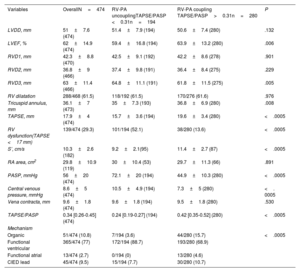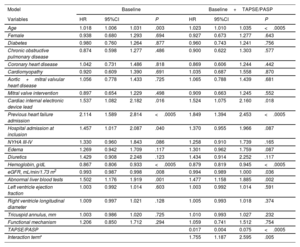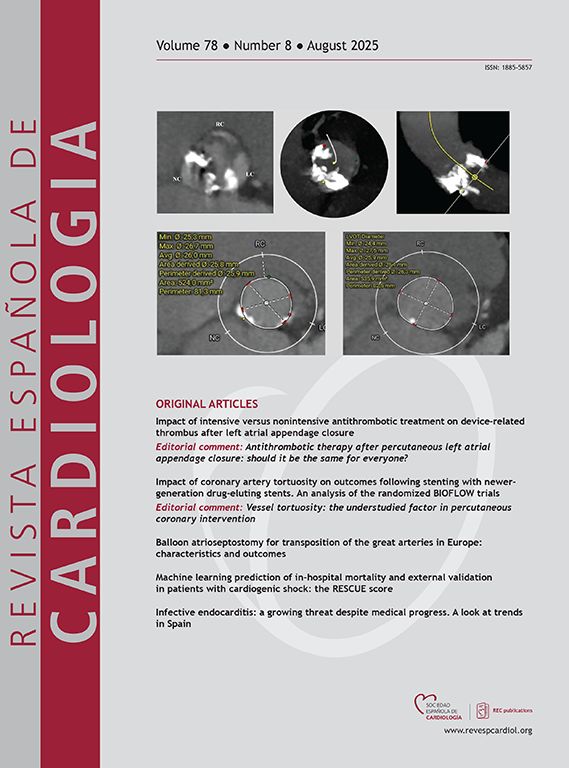
The right ventricular-pulmonary arterial coupling, evaluated by tricuspid annular plane systolic excursion and pulmonary artery systolic pressure ratio (TAPSE/PASP), has been studied in the prognostic assessment of severe tricuspid regurgitation only in selected populations and mainly in relation to all-cause mortality.
MethodsWe retrospectively included all adult patients with severe tricuspid regurgitation who underwent echocardiography at a tertiary care hospital between January 1, 2008, and December 31, 2017. We investigated the association of TAPSE/PASP, either as a continuous variable or dichotomized at <0.31mm/mmHg, with the combined endpoint of mortality and heart failure (HF) admission, as well as its usefulness in several subgroups of interest.
ResultsA total of 474 patients (70±13 years; 71% women) were included, with a median follow-up of 5 [p25-75, 2-7] years. During follow-up, 285 patients died and 192 experienced 481 HF admissions. Patients with TAPSE/PASP <0.31mm/mmHg had significantly worse HF admission-free survival at median follow-up (25% vs 53%, P <.0005). The discriminative ability of TAPSE/PASP was statistically significant (area under the curve, 0.69; 95%CI, 0.65-0.74; P <.0005). After multivariate adjustment, TAPSE/PASP remained an independent predictor of the combined endpoint (HR, 0.017; 95%CI, 0.004-0.075; P <.0005), with significant incremental prognostic value over clinical variables (P <.0005). The performance of the index was consistent in patients with pacemaker/defibrillator leads or prior cardiac surgery, but not in those with reduced ejection fraction.
ConclusionsIn this cohort of patients with severe tricuspid regurgitation, TAPSE/PASP was a strong independent predictor of HF admission or mortality during long-term follow-up.
Keywords
Identify yourself
Not yet a subscriber to the journal?
Purchase access to the article
By purchasing the article, the PDF of the same can be downloaded
Price: 19,34 €
Phone for incidents
Monday to Friday from 9am to 6pm (GMT+1) except for the months of July and August, which will be from 9am to 3pm










